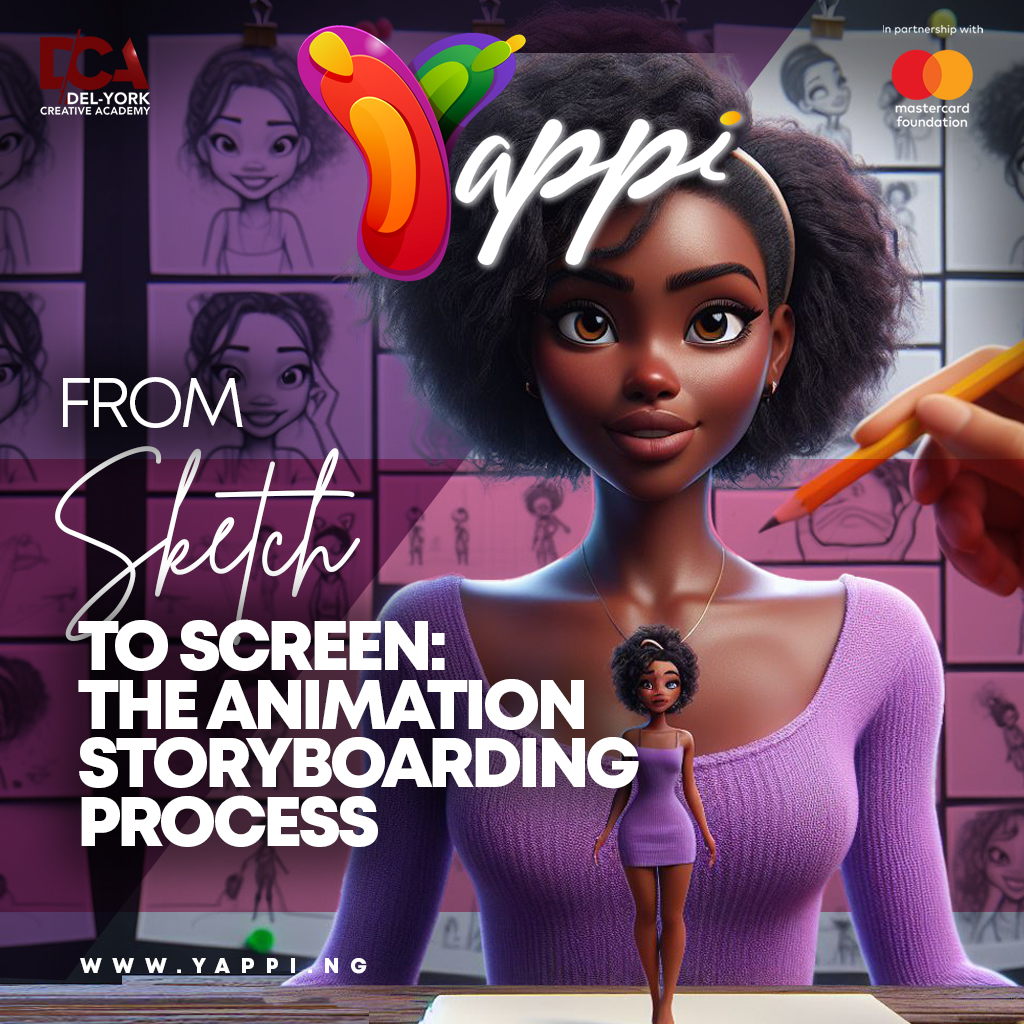From Sketch to Screen: The Animation Storyboarding Process

Remember that iconic scene in “The Lion King” where Simba sprawls under the African sky singing “Hakuna Matata” with Timon and Pumbaa? The carefree melody, the breathtaking landscape, the bubbly dance, and how you sang each line with so much excitement blushed on your face. “It means no worry for the rest of your days.” In the newly released Disney animated series "Iwaju,” set in futuristic Lagos, remember the jaw-dropping fight scene between Otin and Aunty Happiness? It all felt so alive—a testament to the magic of animation.
But how does a sketch on a storyboard’s desk morph into such a vibrant and vivid scene? Just a moment frozen in time. Buckle up as we journey into the animation storyboarding process!
Every animation starts with a spark of idea—a story script that breathes life into characters and sets the stage for adventure. The storyboard artist steps in as a visual translator, meticulously dissecting the script, scene by scene. Each storyboard panel captures a key moment in the narrative, acting as a blueprint for the animators, directors, and the entire production team.
Why is storyboarding so important?
Think of it like a roadmap. Storyboarding helps to:
- Visualize the Story: It allows the creative team to see the flow of the animation, identify potential pacing issues, and ensure the story unfolds smoothly.
- Plan Every Frame: Each panel acts as a guide for the animators, defining camera angles, character movement, and composition.
- Adjustments: Storyboarding allows for revisions and adjustments before the animation begins, saving time and resources in the long run.
- Communicate the Vision: It serves as a universal language for the entire team, ensuring everyone is on the same page about the animation's tone, style, and direction.
So, what goes into a storyboard panel?
- A Clear Image: The illustration doesn't need to be a masterpiece, but it should depict what's happening in the scene. This can be a rough sketch or a more detailed drawing.
- Camera Angles: Storyboards often use different angles to create a sense of dynamism and guide the viewer's focus.
- Character Action: The panels should show how characters are moving and interacting with each other and their environment.
- Dialogue & Narration: Some storyboards may include text to convey dialogue or narration within the scene.
The Storyboard Process:
- Script Breakdown: The storyboard artist starts by carefully dissecting the script and identifying key moments and story beats.
- Thumbnail: Rough sketches are created to map out the overall flow and composition of each scene.
- Refining the Panels: The storyboard artist refines the thumbnails, adding details and ensuring clarity.
- Story Flow & Continuity: The storyboard is reviewed and adjusted to ensure a seamless flow from scene to scene.
- Final Touches: Once approved, the storyboard is finalized and ready to be shared with the production team.
A storyboard is a crucial collaborative effort. The storyboard artist works closely with the writer, director, and other members to ensure the final product reflects the overall vision. It's a dynamic process filled with creative thinking, adjustments, and revisions—all of which bring a story to life on the screen.
So next time you watch an animated movie or show, take a moment to appreciate the meticulous planning and artistry that went into each frame. From those initial sketches on the storyboard, a captivating world comes alive, transporting us to new realities and igniting our imaginations.
Are you looking to become a storyboard artist? Join YAPPI Cohort 2 and learn all these skills for free! Visit our website, www.yappi.ng or follow us on all social media platforms, @yappi_nigeria, for all the exciting information regarding the YAPPI program.
Powered by Froala Editor
Posted By: Folasola Sodiq
1 year ago